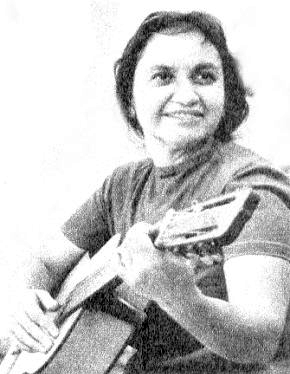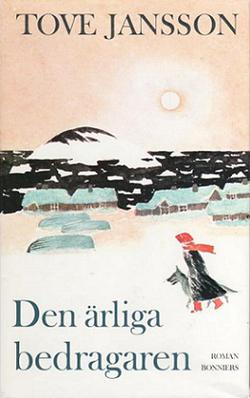
The Red Hot Chili Peppers are an American rock band formed in Los Angeles in 1982, comprising vocalist Anthony Kiedis, bassist Flea, drummer Chad Smith, and guitarist John Frusciante. Their music incorporates elements of alternative rock, funk, punk rock, hard rock, hip hop, and psychedelic rock. Their eclectic range has influenced genres such as funk metal, rap metal, rap rock, and nu metal. With over 120 million records sold worldwide, the Red Hot Chili Peppers are one of the top-selling bands of all time. They hold the records for most number-one singles (15), most cumulative weeks at number one (91) and most top-ten songs (28) on the Billboard Alternative Songs chart. They have won three Grammy Awards, were inducted into the Rock and Roll Hall of Fame in 2012, and in 2022 received a star on the Hollywood Walk of Fame.

The Time Machine is an 1895 dystopian post-apocalyptic science fiction novella by H. G. Wells about a Victorian scientist known as the Time Traveller who travels approximately 800,806 years into the future. The work is generally credited with the popularization of the concept of time travel by using a vehicle or device to travel purposely and selectively forward or backward through time. The term "time machine", coined by Wells, is now almost universally used to refer to such a vehicle or device.

Fredrika Bremer was a Finnish-born Swedish writer and reformer. Her Sketches of Everyday Life were wildly popular in Britain and the United States during the 1840s and 1850s and she is regarded as the Swedish Jane Austen, bringing the realist novel to prominence in Swedish literature. In her late 30s, she successfully petitioned King Charles XIV for emancipation from her brother's wardship; in her 50s, her novel Hertha prompted a social movement that granted all unmarried Swedish women legal majority at the age of 25 and established Högre Lärarinneseminariet, Sweden's first female tertiary school. It also inspired Sophie Adlersparre to begin publishing the Home Review, Sweden's first women's magazine as well as the later magazine Hertha. In 1884, she became the namesake of the Fredrika Bremer Association, the first women's rights organization in Sweden.

Aila Johanna Sinisalo is a Finnish science fiction and fantasy writer. She studied comparative literature and drama, amongst other subjects, at the University of Tampere. Professionally she worked in the advertising business, rising to the level of marketing designer.

Anthony Kiedis is an American musician and a founding member and lead vocalist of the rock band Red Hot Chili Peppers. Kiedis and his fellow band members were inducted into the Rock and Roll Hall of Fame in 2012.

Violeta del Carmen Parra Sandoval was a Chilean composer, singer-songwriter, folklorist, ethnomusicologist and visual artist. She pioneered the Nueva Canción Chilena, a renewal and a reinvention of Chilean folk music that would extend its sphere of influence outside Chile.

The jalapeño is a medium-sized chili pepper pod type cultivar of the species Capsicum annuum. A mature jalapeño chili is 5–10 cm (2–4 in) long and 25–38 mm wide, and hangs down from the plant. The pungency of jalapeño peppers varies, but is usually between 4,000 and 8,500 units on the Scoville scale. Commonly picked and consumed while still green, it is occasionally allowed to fully ripen and turn red, orange, or yellow. It is wider and generally milder than the similar Serrano pepper.

Karin Månsdotter was first the mistress and then the Queen of King Eric XIV of Sweden.

Kate Roberts was one of the foremost Welsh-language authors of the 20th century. Styled Brenhines ein llên, she is known mainly for her short stories, but also wrote novels. Roberts was a prominent Welsh nationalist. In 1963, she was nominated for the Nobel Prize in Literature by Welsh scholar Idris Foster.

"Under the Bridge" is a song by American rock band Red Hot Chili Peppers and the eleventh track on their fifth studio album, Blood Sugar Sex Magik (1991). Vocalist Anthony Kiedis wrote the lyrics while reflecting on loneliness and the struggles of being clean from drugs, and almost did not share it with the band. Released in March 1992 by Warner Bros. Records, "Under the Bridge" was praised by critics and fans for its emotional weight. The song was a commercial success and the band's highest-charting single, peaking at number two on the Billboard Hot 100, number one on the Cash Box Top 100 and certified platinum. It was also a success in other countries, mostly charting within the top 10. Gus Van Sant directed the song's music video, which was filmed in Los Angeles.

Californication is the seventh studio album by U.S. rock band Red Hot Chili Peppers, released on June 8, 1999, on Warner Bros. Records. It was produced by Rick Rubin. Along with Blood Sugar Sex Magik, Californication is one of the band’s best-selling albums.
Peruvian cuisine reflects local practices and ingredients including influences mainly from the indigenous population, including the Inca, and cuisines brought by immigrants from Europe, Asia, and Africa. Without the familiar ingredients from their home countries, immigrants modified their traditional cuisines by using ingredients available in Peru.

Francesca "Frankie" Rayder is an American model. She has a portfolio of covergirl appearances for high fashion magazines and was once a VH1/Vogue Fashion Awards for Model of the Year nominee. She has performed in runway shows, including the annual Victoria's Secret Fashion Show four times and the Sports Illustrated Swimsuit Issue twice. She has also been featured in print ad campaigns. At the peak of her fame, she was an it girl according to The New York Times and GQ once named her the Sexiest Woman in the World.

Ginban Kaleidoscope is a Japanese light novel series written by Rei Kaibara and illustrated by Hiro Suzuhira. A manga adaptation authored by Jun Hasegawa was serialized in Margaret from 2005 to 2006. An anime adaptation of the first arc of the novels aired on TV Tokyo from October 8, 2005 to December 24, 2005.

Masia Lim, better known as Masia One (MAS1A), is a Canadian rapper from Toronto, Ontario.

Aztec cuisine is the cuisine of the former Aztec Empire and the Nahua peoples of the Valley of Mexico prior to European contact in 1519.

Bicol express, known natively in Bikol as sinilihan, is a popular Filipino dish which was popularized in the district of Malate, Manila, but made in traditional Bicolano style. It is a stew made from long chili peppers or small chili peppers, coconut milk/coconut cream, shrimp paste or stockfish, onion, pork, ginger and garlic. The dish was termed by Laguna resident, Cely Kalaw, during a cooking competition in the 1970s in Malate, Manila. The name of the dish was inspired by the Bicol Express railway train that operated from Tutuban, Manila to Legazpi, Albay. The widely-known name for this dish in the Bicol Region of the Philippines was identified as gulay na may lada, which is currently one of the vegetarian variants of the Bicol express dish. As time progressed, variants of the Bicol express dish expanded with seafood, beef, pescatarian, vegetarian, vegan, and other versions. The preparations for these dishes vary according to the meat present within the dish. In terms of nutritional value, the original version of the Bicol express dish is beneficial in protein but unhealthy in regards to its high levels of saturated fats and cholesterol. The dish has moved into food processing and commercial production so that it can be sold conveniently and stored for a longer period of time.

Half of a Yellow Sun is a novel by Nigerian author Chimamanda Ngozi Adichie. Published in 2006 by 4th Estate in London, the novel tells the story of the Biafran War through the perspective of the characters Olanna, Ugwu, and Richard.

The True Deceiver is a novel by Finnish-Swedish author Tove Jansson. It was translated into English by Thomas Teal and won the Best Translated Book Award in 2011.

Mridula Garg is an Indian writer who writes in Hindi and English languages. She has published over 30 books in Hindi – novels, short story collections, plays and collections of essays – including several translated into English. She is a recipient of the Sahitya Akademi Award.

















